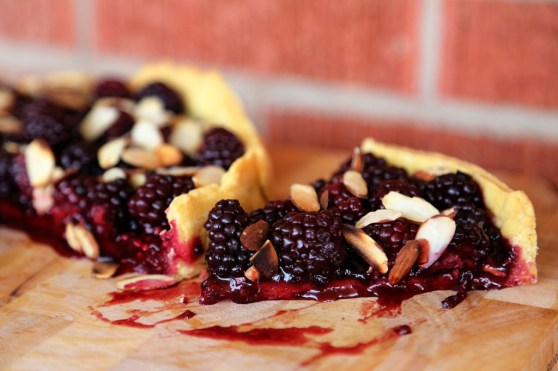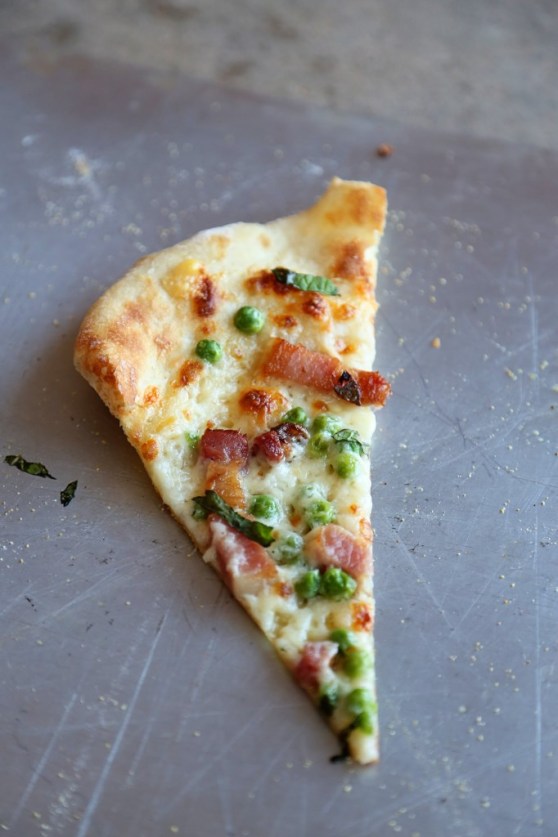
I fulfilled a little dream, today. I baked with my daughter. And she even wore a mini-apron. In just a few more months, she’ll be able to stand beside me on her stool and really help. Today, she got to sit on the counter, play with the rolling pin, say, “row, row, row” as she rolled the dough and even properly sneaked little bites of the raw dough to eat. This girl knows how to live. And I’m so happy that she’s teaching me how to live mine, all over again.


I found cherries on sale for $2.97, regularly over $7! Cherries are in season in May, so I really hope they stay cheap for a few more weeks! I did a couple things with my purchase. First, I put a few whole in a jar and covered them with bourbon.

A great addition to cocktails in a few weeks, I’m sure! Or a grown up ice cream Sunday. Or, a merciful substitution for those horrid Maraschino circles of candy that call themselves cherries.

For my second act, I overcooked a batch of cherry pie filling so much that it resembled bits of dried cherries, resting comfortably in glue. (I’d left it on the stove to “simmer” while I went to see my friend in the hospital. Um, don’t ask why I did that.) Matt rescued my near-break down by going and getting me another pound at 10:00 last night, then helped me pit every last one of them so I could start over. That’s true love.
So I had a vague vision of what I wanted to do. I wanted to make mini pies, fill them with tart cherry filling and use a brown sugar meringue that I’ve used before and wanted to make again because it’s close to perfection and is SO SWEET that it can really only be paired with something tart. So these little devils are a combination of three recipes: Martha Stewart’s hand pie dough, My Baking Addiction’s cherry pie filling and Cindy Pawlcyn’s brown sugar meringue that she uses on her mile high lemon meringue pie at her amazing restaurant, Mustards Grill in Napa Valley (we went! we ate! we went into a food coma!)
The results were pretty great. I think next time, I’d use my tried and true pie crust recipe and just add lemon zest to it. Other than that, this recipe is a winner! Especially for this super hot weekend that reminds us all too well that we live in the desert and it is officially summer.

Mini Cherry Pies with Brown Sugar Meringue
makes two dozen
For the Crust
3 cups AP flour
1/4 tsp baking soda
1 tsp baking powder
1/2 tsp salt
2 tsp lemon zest (this microplane works best!)
1 stick of butter (1/2 cup, room temp)
1 cup sugar
1 large egg
3 oz. cream cheese at room temp
2 tbs buttermilk
1 tsp vanilla extract
In a medium bowl, whisk together the flour, baking soda, baking powder, salt and zest.
With an electric mixer on high speed (I used my stand mixer with the paddle attachment), beat butter and sugar until pale and fluffy, about 5 minutes. Add the egg and beat until just combined. Add cream cheese, buttermilk, and vanilla; beat until well combined. Add reserved flour mixture, and beat until smooth. Form dough into a ball and cover with plastic wrap and flatten into a disc. Refrigerate 1 hour, up to overnight or freeze up to 1 month.
Let the dough come up to room temp and then roll out into a circle about 1/4 inch thick. Cut out 4″ rounds and press them into a standard muffin tin, making sure to patch up any holes that form. This dough is kind of crackly, so don’t fret. It patches up pretty easily. Prick the bottom of each pie with a fork and bake in a preheated 375 degree oven for 15 minutes, or until golden brown. Some of the bottoms of the pies will puff up, but when they’ve cooled just press the puffed up centers down a bit before filling. I wasn’t about to cut 24 parchment rounds and fill each cup with pie weights. I’m not THAT dedicated to perfection.
For the Filling
5 to 6 cups fresh, pitted cherries
1/2 cup water
2 tbs lemon juice (fresh!)
2/3 cup sugar
4 tbs constarch
1/2 tsp almond extract
In a saucepan over medium heat, combine the cherries, water, lemon juice, sugar and cornstarch. Bring to a boil; reduce heat to low and cook, stirring frequently, for about 10 minutes. Stir in the almond extract and cool slightly before using.

I really love using my copper jam pot – (pardon the iPhone pic) The copper heats up almost instantly, as do the sides, so it cooks jam more evenly. There are lovely, affordable ones here!
For the Meringue:
3/4 cup egg whites (about 6 large)
1/4 teaspoon cream of tartar
1 1/2 cups firmly packed brown sugar
Place the egg whites and cream of tartar in an electric mixer fitted with the whip attachment. Place the brown sugar in a medium, heavy saucepan with high sides (that sugar will boil up and scare the meringue right out of you if you have a small pan), add water to cover, attach a candy thermometer to the pan, and turn the heat on high. When the sugar is at about 240 degrees, start whipping the whites on high speed (they should be foamy and starting to thicken before you add the sugar). When the sugar is at the high soft-ball stage (245 degrees), remove the thermometer from the sugar and, with the mixer still running, carefully avoiding the whip, pour the sugar into the egg whites in a thin stream. When steam starts to come off the whites, add the sugar more quickly. When all sugar has been added, continue whipping until firm but soft peaks form.
Assemble!
Fill each pie shell with the filling. Then top each with a generous dollop of meringue (you’ll have leftover meringue) and then get a torch and torch those suckers. I don’t like toasting meringue in my oven because I inevitably scorch them and that makes me feel like a failure and I try to avoid that feeling whenever possible. It’s all about setting yourself up to succeed in the kitchen that will keep you coming back.
I think these are best served with iced coffee because that’s what you need on a 100 degree day like today!

Little fingers are very curious 🙂


JOY!



















































